Καλημερα
Προσπαθωντας να εγκαταστησω λειτουργικο σε εναν παλιο υπολογιστη αντιμετωπιζω σχεδον παντα το παγωμα του λειτουργικου. Νομιζω οτι ευθυνεται ο σκληρος δισκος, πρεπει να ειναι σε καποια τμηματα του καμμενος. Το ερωτημα μου ειναι, εαν μπορω με καποιο live cd ή live usb να κανω ελεγχο στο συστημα ωστε να εντοπισω και να απομονωσω το κοματι αυτο του σκληρου δισκου που προκαλει προβλημα, και στη συνεχεια να εγκαταστησω το λειτουργικο.
Φόρουμ
Δώσε αστέρια!
- Συνδεθείτε ή εγγραφείτε για να σχολιάσετε

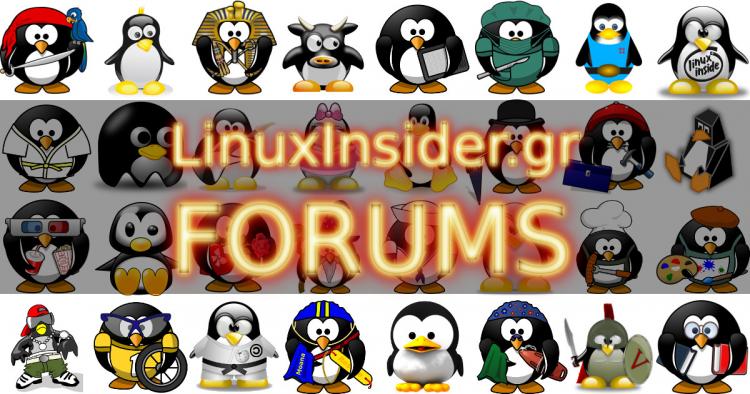
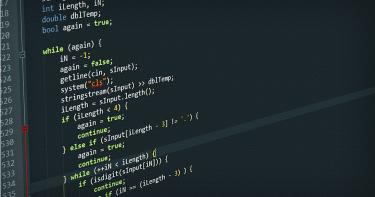
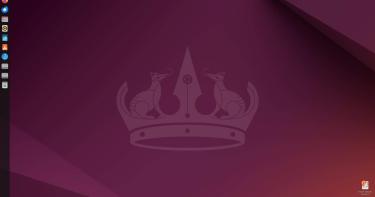
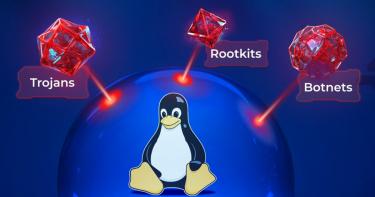
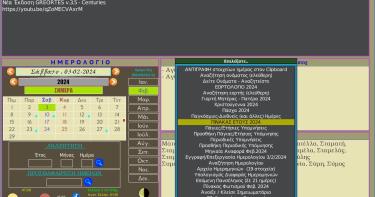

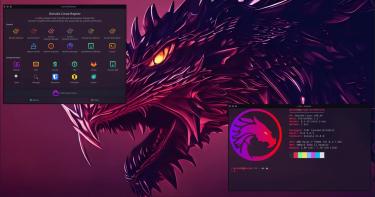
Σχόλια
Για το αν μπορεσεις να διορθωσεις το προβλημα στο δισκο, αυτο δεν το γνωριζω, αλλα δες τα παρακατω link που θα σε βοηθησουν να το δοκιμασεις
[url=http://askubuntu.com/questions/14303/how-can-i-check-my-ram-and-harddrive-for-errors]http://askubuntu.com/questions/14303/how-can-i-check-my-ram-and-harddrive-for-errors[/url]
[url=https://help.ubuntu.com/community/Smartmontools]https://help.ubuntu.com/community/Smartmontools[/url]
[url=http://ubuntuforums.org/showthread.php?t=1416311]http://ubuntuforums.org/showthread.php?t=1416311[/url]
Καλημερα
Προσπαθωντας να εγκαταστησω λειτουργικο σε εναν παλιο υπολογιστη αντιμετωπιζω σχεδον παντα το παγωμα του λειτουργικου. Νομιζω οτι ευθυνεται ο σκληρος δισκος, πρεπει να ειναι σε καποια τμηματα του καμμενος. Το ερωτημα μου ειναι, εαν μπορω με καποιο live cd ή live usb να κανω ελεγχο στο συστημα ωστε να εντοπισω και να απομονωσω το κοματι αυτο του σκληρου δισκου που προκαλει προβλημα, και στη συνεχεια να εγκαταστησω το λειτουργικο.
Εισαι σιγουρος οτι εχει προβλημα ο δισκος? Και γω ειχα παρομοιο προβλημα και τελικα αποδειχτηκε οτι η καρτα γραφικων κολλαγε το συστημα. Δες [url=http://forum.osarena.net/threads/%CE%A0%CF%81%CE%BF%CE%B2%CE%BB%CE%B7%CE%BC%CE%B1-%CE%BC%CE%B5-%CE%B5%CE%B3%CE%BA%CE%B1%CF%84%CE%B1%CF%83%CF%84%CE%B1%CF%83%CE%B7-ubunto%CE%B5%CE%B9%CE%B4%CE%BF%CF%85%CF%82-%CE%B4%CE%B9%CE%B1%CE%BD%CE%BF%CE%BC%CE%B7%CF%82.2169/#post-7860]εδω[/url].
δεν μπορεις να απομονωσεις προβλημα σε hardware. απλα το αντικαθηστας με καινουριο.
Δοκιμασε να κανεις εγκατασταση σε text mode. Αν γινει επιτυχως τοτε ειναι η καρτα γραφικων, αλλιως ειναι ο σκληρος δισκος.
Αντικαττεστησε τον και προχωρα.
ΠΡΟΣΟΧΉ: ΔΙΑΒΑΣΕ ΌΛΟ ΤΟ Post ΠΡΊΝ ΣΥΝΕΧΊΣΕΙΣ...
Μπορείς να δοκιμάσεις το Ultimate Boot CD, το οποίο περιέχει διάφορα διαγνωστικά για κάθε hardware part του υπολογιστή. Μία λίστα με όλα τα εργαλεία που μπορείς να βρεις στο CD υπάρχει στο (http://www.ultimatebootcd.com/index.html).
Διαγνωστικά που σου συστήνω να τρέξεις:
ΜΗΝ τρέξεις:
SPECIAL THANKS TO ADMINISTRATION AND VISITORS OF WWW.NVWORLD.RU FOR HELP
IN THE DEVELOPMENT AND POPULATING OF THE PROGRAM.
================================================================================
Video Memory stress Test v1.7
Video Memory stress Test for Clean Environment v1.21
This test allow you to completely test your video RAM (accessible to
DirectX). The best way to check stability after overclocking ;)
"Video Memory stress Test for Clean Environment" is a separate program,
which must be launched via booting from a special boot disk. Detailed
information about it see in VMTCE folder of this archive.
Main difference from my old tool Artifact Locator is per-bit testing
(almost per-pixel), what allow to escape of usage of GDI and make possible to
use the bit masks almost color masks. Now tests in different color modes
performs in "background", without changing current video mode.
Now no any "show": only two progressbars and simple digits of the results.
In testing process the results field will filled by different information,
video RAM error messages has following view:
Error at [01ABCDEF]: must be FFFF, but found FFEF (bits: 0000000000010000)
Also after detection of the error will be increased counter "Errors found". All
other messages in results field is information-only and do not say about video
RAM errors.
On videocards with hundreds megabytes of video RAM full test set can to
work many hours. Express-test can be performed by selecting value "Small" or
"Express 15%" in field "Test set". First variant does not test memory with
walking bits. Second one performs test with all patterns, but process only
random 15% of created surfaces (different for each pattern and not less then
one in any case). "Small" test set is good for quick check of overall memory
integrity, "Express 15%" is better for quick stability test after overclocking.
Except testing via DirectX, now program can to test video RAM via CUDA
interface from nVidia company. Dropdown list "Test type" allows switch test
method. Beyond selecting "CUDA" item test options panel will change its view
and will contain two new dropdown lists. With "Device" list can be selected
one of available video cards, and "Memory block size" list contain available
values for one memory test step. The CUDA technology at this moment supported
only nVidia GeForce 8xxx and 9xxx series cards. IN THE CURRENT PROGRAM VERSION
THIS TEST TYPE HAS BETA-STATUS AND IT CORRECT WORK ON YOUR SYSTEM DOES NOT
GARANTED.
Except testing via DirectX, now program can to test video RAM via OpenGL
interface. All main parameters is like "CUDA", but main difference is in the
necessary to manually select video memory size (OpenGL does not provide any
way to determine it automatically). IN THE CURRENT PROGRAM VERSION THIS TEST
TYPE HAS BETA-STATUS AND IT CORRECT WORK ON YOUR SYSTEM DOES NOT GARANTED.
Mode with using of onscreen buffer allows to test videocards with incorrect
direct memory read function (on this moment it is Radeon HD 38xx series). If
with default settings test found big count of different errors, there is
onscreen buffer mode must be used. In this case only one color mode can be
processed, all others will skipped. In some cases this mode needs disabling of
ignoring colors bit mask option (many errors with bits 1000000000000000 or
11111111000000000000000000000000). While test progress with onscreen buffer
usage test window must be on the desktop and over other windows!
A management of used color modes is accessible by using command-line
switches. If pass "+24" parameter, program will try to use 24-bit color even if
video driver does not reports of it support. Allowed adding of modes starting
from 16, but all them must be is multiple to 8. Parameter "-16" removes all
variants of 16-bit mode from testing. Also can be disabled separated submodes,
for example parameter "-RGB:555" will force to ignore of this submode in test
process (existing modes are: RGB:565, RGB:555, BGR:565, RGB:888 and BGR:888).
There are some difficults to determine actual memory size of videocards
with TurboCache, HyperMemory or other video RAM extension technology. In this
case if program processes more or less video memory, then really exists on
card, it is desirable to specify actual video memory size by passing to command
line count of megabytes of video RAM as simple digit.
After starting program sets interface language such as default language of
current user. It is possible to select language manually by command-line
parameter "/Lang". To set English language need to pass "/Lang:English"
parameter. Text resources are stored in VMT.LNG file and can be changed.
Program have internal visual command line builder. For launch it "/Loader"
parameter must be passed in. This parameter can only be combined with "/Lang"
parameter (in this case passed langiage ID will be selected and added to
result command line).
Examples of program launching with parameters:
VMT.EXE /Loader
Start VMT command line visual editor
VMT.EXE -16 -24 -BGR:888
Starts testing in single mode 32bpp/RGB:888
VMT.EXE 64 /Lang:English
Testing only 64 megabytes of memory and select English interface
language.
VMT.EXE +24 16
Forces 24-bit color and limits RAM usage to 16 megabytes.
Recommendations on use:
- DirectX 7.0 or better must be installed (DirectX 9 is recommended).
- CUDA 1.1 or better must be installed for CUDA test mode.
- OpenGL 1.5 (or OpenGL 1.1 with "GL_ARB_vertex_buffer_object" extension
available) must be installed for OpenGL test mode.
- Before testing all graphical applications (editors, viewers, players,
games etc.) must be closed.
- Monitor standby function must be deactivated.
- Before start testing, program prompts for changing video mode to
640x480x16 (for able to capture more video RAM), and it is recommended to
agree. Your actual video mode will be restored after test ending (or
canceling).
- For better check it is recommended to perform test two times: with
square surfaces (for example 1024x1024) and with rectangle surfaces
(for example 256x1024).
- Do not think what addresses of fail points is physical addresses. This
values represents only logical offsets and writed for information and
analytic purposes.
- Output of big count of errors vary decreases test speed. For disable
error output uncheck flag "Log errors". Counting of errors in field
"Errors found" continues.
- Because the way of test data is vary long (system memory - memory
controller - bus - GPU - video RAM), sometimes can be found errors,
what are not mean videocard fault. Recognize these errors is possible by
random addresses and bits. In any case, before testing, all system
overclocking must be disabled (except videocard, if it testing for check
stability after overclocking).
- While test in progress, do not change any video options.
- Do not ignore 16-bit modes! Many GPU show decreased stability of memory
controller in these modes.
Known issues:
- Because of problems with determining of actual video RAM size on cards
with any memory extension technology (like TurboCache or HyperMemory),
can be necessary to specify correct megabyte count in command line.
- Cards of Radeon HD 38xx and 2xxx series (may be also some others of same
generations) has problems with direct memory reading and if on this card
test shows many different errors, "Onscreen buffer" mode must be
selected.
Program is free for home use. For purchase commercial licenses write to
address [email protected] or [email protected].
2008 (C) Misha Cherkes, http://mikelab.kiev.ua/index_en.php
Φυσικά, όλα αυτά τα δοκιμάζεις με ΔΙΚΉ ΣΟΥ ΕΥΘΎΝΗ και ούτε εγώ ούτε κάποιος άλλος από το forum δεν είναι υπέθυνος αν κάτι πάει στραβά.